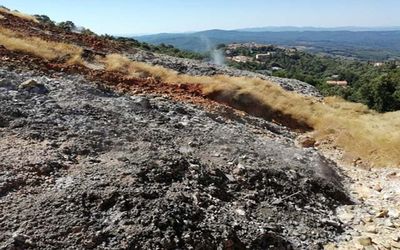Currently, the hydrogen we use is manufactured, with significant energy and carbon emission costs. If hydrogen is becoming a green fuel, we will need a lot of hydrogen, and continuing to produce it from hydrocarbons will not be a carbon neutral solution. A possible alternative could be the "native" hydrogen, the natural hydrogen which is released by the water/rock interaction in many places on earth. Its direct production, even if still neglectable today, is starting to be seriously considered to have truly "green" and inexpensive hydrogen [1] [2]. Is it possible to put it into production? And do we have this ressource in Italy?
Today, very little is known about Italy's H2 potential. However, we know that there are many favourable geological contexts: in the Apennines and in the Alps there are ophiolitic nappes, and the context of extension along the Tyrrhenian margin, with significant crustal thinning, presents points of similarity with the oceanic ridges. The granite intrusions in Tuscany are also significant and recent. In fact, measurements of the gas content from geothermal areas show a certain percentage of H2 on the entire Tyrrhenian coast, from Larderello to Naples, including the area of Mount Amiata (Selvena) and the surroundings of Rome. A collaboration on these issues is underway between the Université de Pau et des pays de l’Adour, France; and the CNR, Institute of Geosciences and Georesources of Florence. A first field survey and geochemical sampling mission was carried out in the geothermal areas of Larderello and Mt. Amiata, which confirmed the presence of hydrogen emission. Work will continue to quantify these emanations and understand their origin.
Full version of the article:
Moretti I., Piccardi L., 2020. Idrogeno naturale: una curiosità geologica o un'importante fonte di energia in futuro? Renewable Matter, 34, 2 novembre 2020, 5pp. https://www.renewablematter.eu/articoli/article/idrogeno-naturale-curiosita-geologica-o-futura-fonte-di-energia
Note
[1] Prinzhofer A. and Deville E., 2015. Hydrogène naturel. La prochaine révolution énergétique ? Édition Belin (maggio 2015).
[2] Moretti, I. 2019. H2: energy vector or source ? L’actualité chimique, n° 442, luglio-agosto, p 15-16.
For further information please contact Luigi Piccardi, CNR-IGG ().
